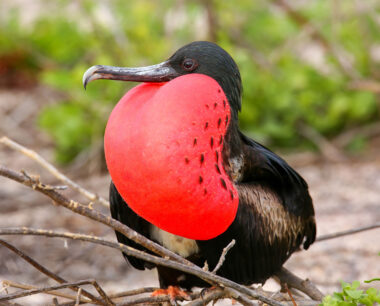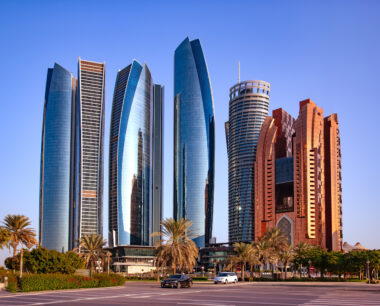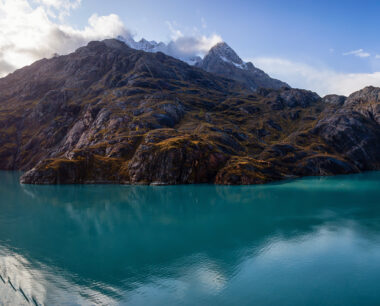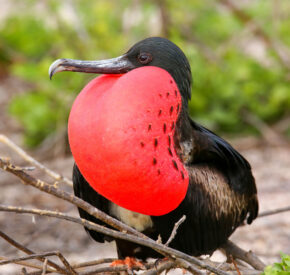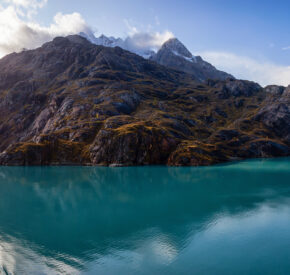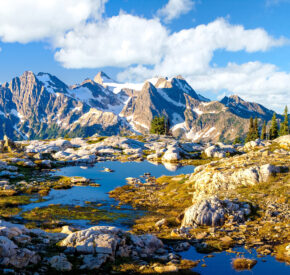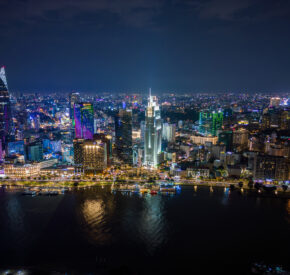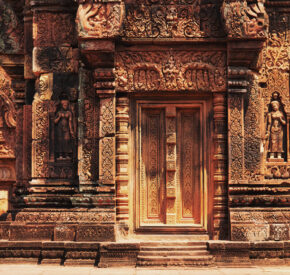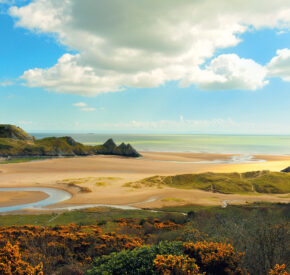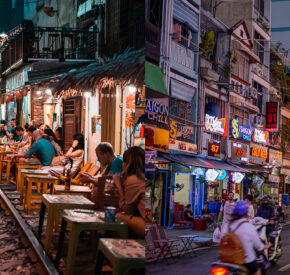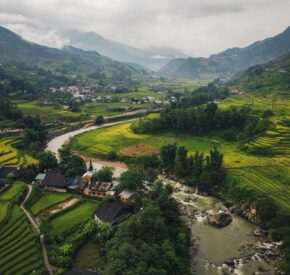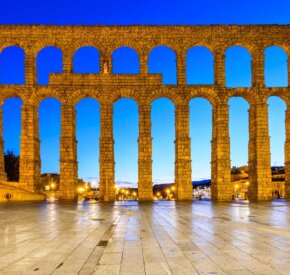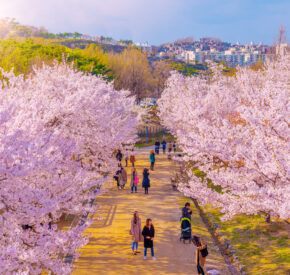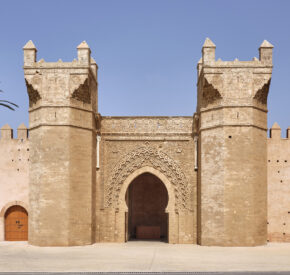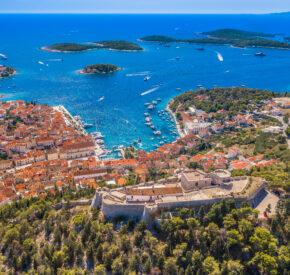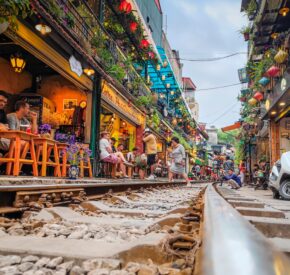Ho Chi Minh City, or as locals still call it, Saigon, is one of Southeast Asia’s great modern metropolises. The largest city in Vietnam, its serrated skyline of neon skyscrapers – some of them nearly half a kilometre high – shimmers in the winding Saigon River. Hidden at their feet, in the city’s heart is a gorgeous old French Quarter, where tree-filled boulevards are lined with a glittering Opera House, a salmon pink neo-Gothic cathedral and stately Belle Epoque mansions.
The frenetic whirligig of Saigon plays out against this backdrop.
Fifty years ago, the city fell to the Viet Cong, so there’s no time like the present to savour the history and sample this sultry city over several days. Here are the best things to do in Ho Chi Minh City (Saigon) in 2025.
9 of the best things to do in Ho Chi Minh City (Saigon)
1. Visit the War Remnants Museum
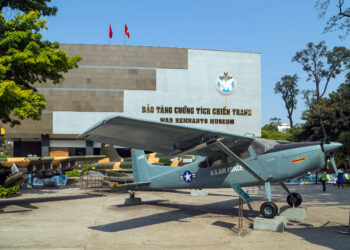
The War Remnants Museum starkly lays out the effect of what Vietnamese call the American War on their people, from the captured planes and tanks in the courtyard to the shocking impact of Agent Orange and napalm on forests and villages. After a visit, the prosperity and positivity of modern Saigon just fifty years on feels miraculous, and the city’s rechristening as Ho Chi Minh City poignant.
More information: baotangchungtichchientranh.vn
Read next: 9 of the best things to do in Hanoi
2. Explore the Cu Chi tunnels
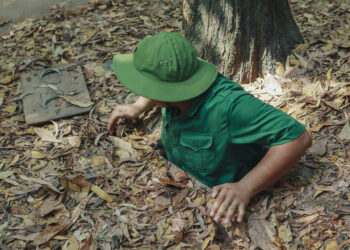
Cu Chi is more an underground city than a set of tunnels. This was where the Viet Cong were based prior to capturing Saigon in 1975. The Americans never found them – despite carpet bombing the area and denuding it entirely of vegetation.
On a visit you will see how Vietnam defeated the world’s preeminent superpower with bits of broken steel and astonishing ingenuity and grit. Guided tours include the option of crawling through sections of the tunnels, which have been enlarged to fit Western visitors, and then, if you wish to, shoot contemporaneous munitions at the firing range.
Read next: 17 of the best things to do in Vietnam
3. Wander Saigon’s French Quarter

Saigon’s French Quarter was intended to be the spiritual heart not merely of the colony of Cochinchina, but of a new France in Asia. This was a mini-Paris, designed to a European plan and comprising the Asian Notre Dame cathedral, a shimmering Opera House modelled on the Petit Palais, Fernand Gardè’s tropical version of Paris’s Hôtel de Ville (now renamed the Ho Chi Minh City People’s Council) and Admiral Pierre-Paul de La Grandière’s Botanical Gardens.
The grandest architecture has been lovingly preserved. But in the surrounding streets, Twentieth Century French art deco buildings crumble as the skyline of new Ho Chi Minh City rises from the ashes of Parisian Saigon.
Read next: Our guide to the best time to visit Vietnam, no matter your itinerary
4. Shop in Ben Thanh Market

Hunkering in the heart of the District One in Central Ho Chi Minh City, this delightful covered market is one of the few surviving buildings anywhere constructed by French Empire industrial architects Brossard-Mopin, who worked almost entirely in Asia. It started life as a fish and vegetable market, and while locals still buy food here, Ben Thanh’s principal shoppers are tourists who browse everything from branded bags to cheap t-shirts and herbal teas to silks. There’s great street food, too, and in the streets around a string of tailors where you can get suits, skirts and shirts made bespoke at a great price in just a few days.
Read next: 6 alternative places to visit in Vietnam
5. Stroll around Cholon, Ho Chi Minh City’s Chinatown
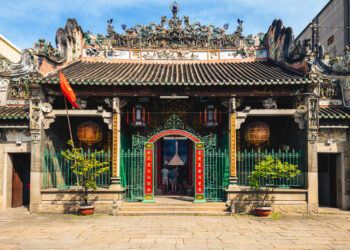
Saigon’s Chinatown feels like a city apart, as indeed it was until Ho Chi Minh started its rapid late 20th century expansion. Cholon Town is in fact far older, founded by various Chinese migrant communities from the 17th Century onwards, including Minh Hương refugees from Ming China fleeing the persecutions of the Manchu Qing Dynasty, and Fujianese who came here under encouragement from the Vietnamese Nguyen Emperors in the 18th Century.
They’ve left their mark in a series of stunning, architecturally Chinese shrines, some of which preserve religious traditions lost elsewhere. Don’t miss the dragon-gabled, incense-swirling Quan Am Temple, dedicated to Guanyin, the Chinese version of the Boddhisattva Avalokitesvara from the Lotus Sutra, and the Thien Hau Temple dedicated to the Fujianese sea goddess Mazu whose cult has been largely lost both in mainland China and Taiwan.
6. See Ho Chi Minh City from river and rooftop
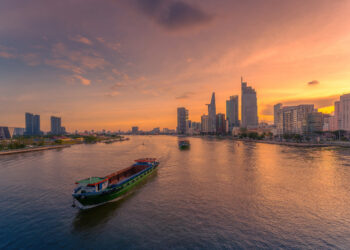
The best views of Saigon are from river and rooftop. Start with a boat cruise, choosing one which sails just before sunset. Watch the golden light glisten over the water and glitter in the glass towers. As the light deepens into twilight, the city twinkles into nightlife in myriad neon, argon and xenon colours. Most evening cruises include dinner on board, after which you can catch a cab to a sky bar like Twilight and watch the city whirr at your feet, cocktail or cold beer in hand.
7. Broaden your palate through Vietnam’s lively food scene
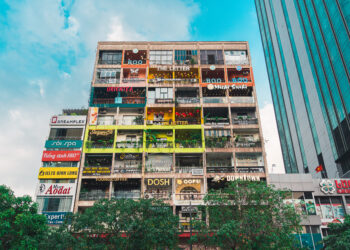
The residents of Ho Chi Minh love their food, and there are a myriad of great places to eat for all budgets, from upscale Secret Garden (which is a leafy haven in the heat) to hundreds of street stalls, where locals sit around plastic tables after work and feast on piping hot Com Tam (broken rice with honey-glazed pork cuts, garlic, cucumber, carrots, and a fried egg) or Pho.
There are superb vegetarian restaurants, too, like HUM which is decked out in technicolour contemporary art and set in an open-plan dining hall garden filled with Lotus flowers.
Café society is as Ho Chi Minh City as it is Parisian. Be sure to sample thick Vietnamese coffee in the quintessentially Saigonese 42 Nguyen Hue Coffee Apartment Building, a huge converted 1970s apartment block overlooking one of the centre’s key boulevards whose rooms now all house arty little cafés.
8. Meet the Jade Emperor
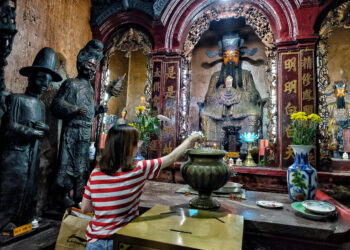
Saigon’s biggest and brashest pagoda was founded by a Cantonese merchant in the early 20th century. It’s an eclectic place – nominally dedicated to the great immortal Taoist warrior who defeated a string of monstrous beings at the dawn of time, but honouring mythological characters from Buddhist and Confucian traditions.
The Emperor himself stands majestic and some four metres high in the main sanctuary. The Hall of the Ten Hells has murals depict the karmic fate awaiting those who have fallen into the lower states of life according to Mahayana Buddhism. The City God’s shrine is more practical and Confucian. His hat reads in Chinese ‘Look at Me Once to Receive Money’. You’ll have to give it first (there’s a box at his feet), then rub his hand and wait patiently for munificence.
Other shrines are dedicated to Avalokitesvara the Boddhisattva of Compassion from the Lotus Sutra, depicted as Quan Am and Bodhidharma who brought Buddhism and Kung Fu across the Himalayas from India to China.
9. Visit the Independence Palace
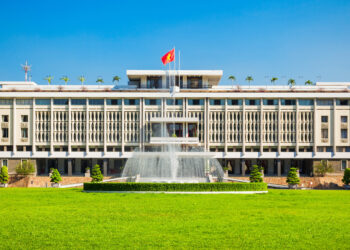
This beautiful modernist hall designed by one of Vietnam’s greatest architects Le Corbusier-influenced Ngô Viết Thụ was built as the Independence Palace for the short-lived Republic of South Vietnam. President Nguyen Van Thieu used it as his headquarters until April 1975 when the building fell to the Vietnamese army in the Fall of Saigon. The palace was subsequently renamed Reunification Hall and closed down when the official capital of the new unified Vietnam shifted to Hanoi. It’s a museum today, with its very 1960s rooms preserved much as they were before Nguyen Van Thieu fled and a Vietnamese T-54 tank sitting in the gardens near the entrance the tanks crashed open.




